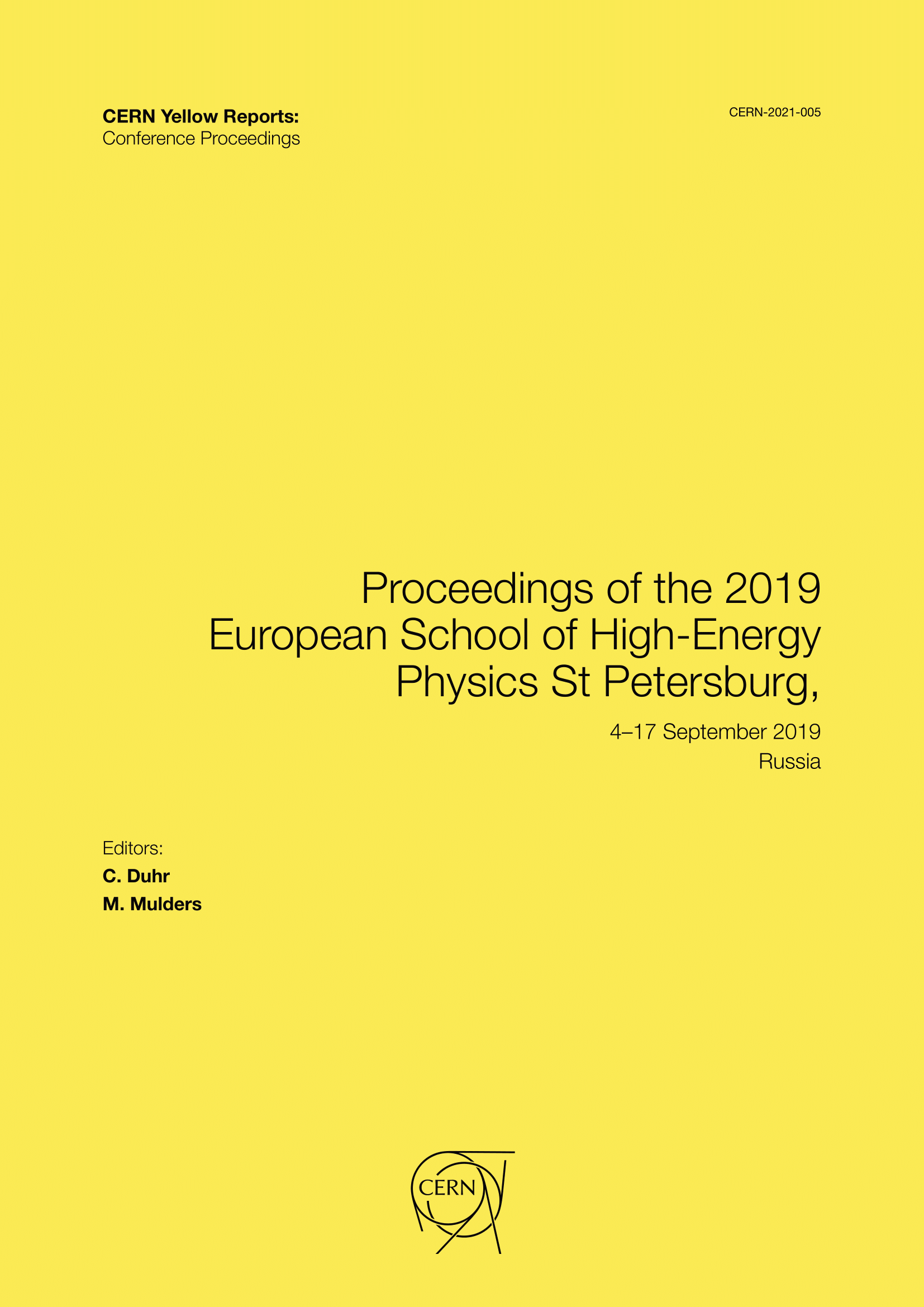Cosmology and dark matter
DOI:
https://doi.org/10.23730/CYRSP-2021-005.129Abstract
Cosmology and astroparticle physics give the strongest possible evidence for the incompleteness of the Standard Model of particle physics. Leaving aside the mysterious dark energy, which may or may not be just the cosmological constant, two properties of the Universe cannot be explained by the Standard Model: dark matter and matter-antimatter asymmetry. Dark matter particles may well be discovered in foreseeable future; this issue is under intense experimental investigation. Theoretical hypotheses on the nature of the dark matter particles are numerous, so we concentrate on several well motivated candidates, such as weakly interacting massive particles, axions and sterile neutrinos, and also give examples of less motivated and more elusive candidates such as fuzzy dark matter. This gives an idea of the spectrum of conceivable dark matter candidates, while certainly not exhausting it. We then consider the matter-antimatter asymmetry and discuss whether it may result from physics at 100 GeV–TeV scale. Finally, we turn to the earliest epoch of the cosmological evolution.
Although the latter topic does not appear immediately related to contemporary particle physics, it is of great interest due to its fundamental nature. We emphasize that the cosmological data, notably, on cosmic microwave background anisotropies, unequivocally show that the well understood hot stage was not the earliest one. The best guess for the earlier stage is inflation, which is consistent with everything known to date; however, there are alternative scenarios. We discuss the ways to study the earliest epoch, with emphasis on future cosmological observations.
Downloads
Published
Issue
Section
License
Copyright (c) 2022 CERN

This work is licensed under a Creative Commons Attribution 4.0 International License.
Authors who publish with this publication agree to the following terms:
- CERN retains copyright and publishes the work licensed under the Creative Commons Attribution License 4.0 that allows others to share the work with an acknowledgement of the work's authorship and initial publication in this series.
- Authors are able to enter into separate, additional contractual arrangements for distribution of the published version of the work (e.g., post it to an institutional repository or publish it in a book), with an acknowledgement of its initial publication in this series.
- Authors are permitted and encouraged to post their work online (e.g., in institutional repositories or on their website) prior to and during the submission process, as it can lead to productive exchanges, as well as earlier and greater citation of published work (See The Effect of Open Access).

